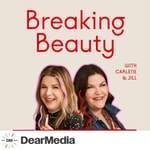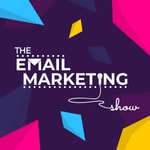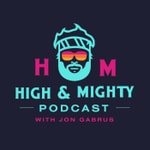Build Your Online Audience – Details, episodes & analysis
Podcast details
Technical and general information from the podcast's RSS feed.

Build Your Online Audience
Janet Murray
Frequency: 1 episode/4d. Total Eps: 473

Recent rankings
Latest chart positions across Apple Podcasts and Spotify rankings.
Apple Podcasts
🇨🇦 Canada - marketing
20/07/2025#85🇨🇦 Canada - marketing
19/07/2025#55🇬🇧 Great Britain - marketing
19/07/2025#97
Spotify
No recent rankings available
Shared links between episodes and podcasts
Links found in episode descriptions and other podcasts that share them.
See all- https://www.upwork.com/
1878 shares
- https://www.canva.com/
1033 shares
- https://zoom.us/
664 shares
- https://www.instagram.com/boostlyuk
1377 shares
- https://www.instagram.com/natlue
302 shares
RSS feed quality and score
Technical evaluation of the podcast's RSS feed quality and structure.
See allScore global : 38%
Publication history
Monthly episode publishing history over the past years.
[NEW PODCAST TRAILER] The Courageous Content podcast is live!
mercredi 2 juin 2021 • Duration 03:31
Find out what to expect from Janet's new podcast in this super short trailer.
Listen on Apple Podcasts
Or your favourite podcast app.
And don't forget to download, subscribe rate and review - those reviews are SO important!
[450] How to bounce back from a failed launch with Natalie Sisson
Episode 450
vendredi 26 mars 2021 • Duration 38:27
THIS IS THE LAST EPISODE OF THIS PODCAST. MY NEW PODCAST IS CALLED THE COURAGEOUS CONTENT PODCAST. FOLLOW & DOWNLOAD ON YOUR FAVOURITE PODCAST APP.
https://courageous-content.captivate.fm/
Have you ever launched a course or product that flopped - leaving you wondering where you went wrong?
If this sounds familiar you’ll love this podcast episode with business coach Natalie Sisson.
Natalie explains how to bounce back from a failed launch and shares her experience of a launch that flopped (and the BIG lessons she learnt).
You’ll learn why being true to yourself can have a huge impact on your launch and how to find the resilience to bounce back from failure.
This is the final episode of The Build Your Online Audience podcast.
Join the waiting list for my NEW podcast (launching in May 2021) here.
{Click on the player above to listen to the podcast episode and/or read on for a detailed overview. Scroll down to the bottom to read the show notes including all the links mentioned in this episode.} Podcast shownotes
- About this final Build Your Online Audience podcast episode (00:30)
- How Natalie inspired me at the start of my podcast journey (01:01)
- Find out about my new Courageous Content podcast (01:58)
- About Natalie and her mission to help women earn what they’re worth (03:32)
- What happened when Natalie’s launch went wrong (06:40)
- How your mindset can make a bad launch so much worse (09:20)
- Why your launch will bomb if you don’t stay true to your values (14:15)
- Why solving problems is more important than perfection (15:53)
- The key things you need to remember for a successful course launch (17:10)
- Why the size of your audience should determine your launch strategy (19:10)
- Why keeping your launch simple is key to success (23:02)
- How to find out if people will buy your course before you launch (26:57)
- About Natalie's new book ’Suck it up Princess’ (33:45)
- Why resilience is key when you’re launching (36:20)
- How to join the waitlist for my new Courageous Content podcast (37:29)
Natalie's website and podcast
Natalie’s Instagram
Natalie’s book Suck It Up Princess
Be the first to hear when my new podcast goes live in May 2021.
Sign up for the waitlist to hear about my new Courageous Content podcast
Join my Build Your Online Audience programme
Other useful podcasts[Bonus] Should you join Janet Murray’s Build Your Online Audience Programme? (podcast)
[Bonus] Why I'm ending the Build Your Online Audience Podcast and what's happening next (podcast)
[009] How to build a memorable brand with Natalie Sisson (podcast)
[418] How long does it take to create an online course (podcast)
[426] The ultimate course launch checklist (podcast)
[440] The secret to a successful online course or membership launch (podcast)
Connect with me on Twitter, Instagram, Facebook and LinkedIn
[443] How to create content that will attract your ideal customers/clients with Dawn Bradley
Episode 443
vendredi 5 février 2021 • Duration 56:39
Ever find yourself wondering how some business owners manage to get tons of engagement (and sales) from the content their share on social media?
Then you’ll love this podcast episode with Dawn Bradley - who teaches hair stylists how to build a six-figure business (having done exactly that herself).
Dawn explains how to create content that really gets under the skin of your ideal customers/clients and keeps them coming back for more.
PLUS how to get comfortable with sharing content on more personal topics (and why you should). And why you must stop trying to appeal to everyone (because you’ll end up appealing to no one).
This episode is packed full of tips, strategies and ideas - regardless of what type of business you have.
- About this podcast episode (00:39)
- About my Instagram Success Academy (01:35)
- About Dawn and her business journey (02:20)
- When Dawn realised she wanted to work smarter not harder (05:30)
- How Dawn used the power of Instagram to create demand for her services (07:15)
- The language Dawn uses to attract her ideal clients (11:38)
- Why relatable content is more important than perfection (16:20)
- How Dawn uses client shaming without upsetting people (21:11)
- Why you can’t appeal to everyone and why you shouldn’t try to (29:51)
- How to deal with people who want to give you feedback (34:20)
- How Dawn niched her content by embracing the weird (36:50)
- Why Dawn got anxious putting out content that didn’t align with her (37:10)
- How to make your audience relax by putting out content that they can relate to (41:01)
- How Dawn blends professional and personal life to connect with her audience (45:10)
- Why boundaries about what you share online are important (47:50)
- Why spontaneous content can work better than scheduled (49:20)
- Why connecting with people’s emotion is really important (52:48)
Join my Instagram Success Academy
Buy my 2021 Social Media Diary & Planner
Other useful podcasts
[Bonus] Should you join Janet Murray's Build Your Online Audience Programme? (podcast)
[Bonus] Should you buy my 2021 Social Media Diary & Planner? (podcast)
[362] How to grow your Instagram following to 27K fast (podcast)
[379] How to grow your Instagram posts by 1K in 30 days (podcast)
[385] How to sell on Instagram Stories (without feeling sleazy) (podcast)
[392] How to get more engagement on Instagram (podcast)
[408] 11 Instagram Story ideas to help you make more sales (podcast)
[415] How to use TikTok to build your online audience with Sam Bearfoot (podcast)
Connect with me on Twitter, Instagram, Facebook and LinkedIn
[365] Why your Facebook page isn’t getting enough engagement (and what to do about it)
lundi 16 septembre 2019 • Duration 07:44
Are you frustrated by the lack of engagement with your Facebook page?
You’re posting regularly but your reach is poor. Your posts are only attracting a handful of likes and comments - leaving you wondering if it’s worth having a page at all.
If this sounds like you, the first thing you need to know is that it’s nothing to do with the Facebook algorithm and everything to do with the kind of content you’re sharing.
Which means there is a lot you can do to improve your engagement (without spending a penny on advertising).
If this sounds familiar, you’ll love my seven episode podcast series on how to improve your Facebook page engagement.
{Click on the player above to listen to the podcast episode and/or read on for a detailed overview. Scroll down to the bottom to read the show notes including all the links mentioned in this episode}This episode is part of a seven episode challenge to help you improve your Facebook page engagement. You can read more about the challenge here.
Why your Facebook page isn’t getting enough engagement (and what to do about it)If you’re not getting engagement on your Facebook page, it’s easy to blame the algorithm (i.e. the complicated - and super top secret - mathematical equation Facebook uses to determine how many people your content is shown to).
The truth is, if you’re engagement stinks, it’s nothing to do with the Facebook algorithm and everything to do with the kind of content you’re sharing (plus how you’re sharing it).
The good news is, there is a LOT you can do to improve your Facebook page engagement (without spending a penny on advertising).
But the first thing you need to know is that posting great content is not enough. You also need to ‘train’ the Facebook algorithm to recognise your content as important so it will show it to more people. How do you do that? By getting engagement on your posts in the form of likes and comments.
If you’re currently struggling to attract likes and comments, this might seem like a ‘chicken and egg’ situation. If you not many people are commenting on your content, others are likely to want to comment either.
But the answer is surprisingly simple; instead of sitting back and hoping someone will comment on your content...you need to go out and find people to comment on your content.
Do this one thingMake a list of 15 people you can ask to comment on your content for the duration of the challenge (and beyond if you can). This is your Facebook Engagement Tribe. Ideally these will be your ideal customers, but if this is not possible, just do what you can to get some engagement going on your page. You can even get together with a group of fellow business owners and comment on each others’ posts - that way everyone benefits.
It may take a while for Facebook to catch on that your posts are valuable and start showing them to more people - which is why it’s important to be patient.
Remember, also, that it’s not just about the algorithm. Your Facebook page is your shop window; if people look you up online and see you’re effectively broadcasting to an audience of none, they will assume (rightly or wrongly) your business is not successful. If they see engagement - in the form of likes and comments (even if they do initially come from your best friend!) they’re much more likely to take you seriously.
ResourcesTake part in my 7 day Facebook challenge here
Social Media Video Engagement Playbook
Social Media Engagement Playbook
LinkedIn Content Strategy Playbook
Connect with me on Twitter, Instagram, Facebook and LinkedIn
[364] How to deal with difficult customers or clients
vendredi 13 septembre 2019 • Duration 39:27
Do you ever have clients or customers who seem impossible to please? If you’re a coach or consultant, these typically show up as clients who sign up to work with you…and then don’t do the work. But somehow they try to make it feel like it's all your fault.
If you have a product-based business, these are generally the ones who ask for discounts and refunds - often without justification. These kind of people can be a huge drain on your energy - and your time.
In this episode I share practical strategies for dealing with difficult clients and customers.
{Click on the player above to listen to the podcast episode and/or read on for a detailed overview. Scroll down to the bottom to read the show notes including all the links mentioned in this episode} Podcast shownotes- How setting the ground rules can help reduce complaints (4:46)
- Why prevention is better than cure by managing expectations of clients (5:46)
- How setting boundaries can reduce your workload and manage client expectations (6:45)
- How to create a fairplay agreement for your guidelines and learn about mine (13:25)
- How having your FAQs on your sales page can help if a customer is dissatisfied(14:08)
- How communicating well and monitoring your communications can help protect against unhappy clients (16:48)
- How creating key blog posts in a membership can improve a client experience (18:10)
- How anticipating potential problems will help prevent problems with clients (22:39)
- How to use a discovery call with a potential client to decide if you can work with them (24:45)
- How to defuse a situation with an unhappy client (28:00)
- How putting the onus back on the customer can help de escalate a situation (29:38)
- How to deal with someone who complains by showering them with love (33:17)
- Why you shouldn’t be afraid to refund people and let them go (36:20)
Jay Baer Hug your haters
How to get the most out of the Build Your Audience Office Hour
How to get the most out of your Build Your Audience membership
Take part in my 7 day Facebook challenge here
[202] Behind the scenes of my membership community (podcast)
[219] How to get your ideal clients to fall in love with you with Laura Pearman (podcast)
[281] How to find new clients or customers fast (podcast)
[351] How to get corporate clients (and why you should) with Dylis Guyan (blog post)
Lost your mojo with your membership community? Here's how to get it back. (blog post)
How to add captions to your video using Kapwing and Rev.com (blog post)
Social Media Video Engagement Playbook
Social Media Engagement Playbook
LinkedIn Content Strategy Playbook
Connect with me on Twitter, Instagram, Facebook and LinkedIn
[363] How to bust through an audience growth plateau
vendredi 6 septembre 2019 • Duration 33:18
If you’re struggling to grow your audience on social media, the temptation is to keep trying more and more new marketing strategies.
But this can often leave you feeling overwhelmed and overworked. And when you’re spreading yourself too thin - you can end up doing lots of things not very well - which can actually stunt your audience growth.
If this sounds familiar, you’ll love this podcast episode on how to bust through an audience growth plateau.
In it, I show you how doing things differently (rather than doing more) can help you kickstart your audience growth.
{Click on the player above to listen to the podcast episode and/or read on for a detailed overview. Scroll down to the bottom to read the show notes including all the links mentioned in this episode} 1. Focus on one platformIf you’re struggling to build your audience on social media, it may be because you’re spreading yourself too thin. Focusing on growing your audience on one social media platform means you can go deep on all the features of that platform - and experiment with different strategies - rather than ‘dabbling’ with three or four.
This doesn’t mean you can’t post on other social media platforms at all; you can always repurpose some of the content from your main platform. But putting 90% of your efforts into one platform will almost certainly help you grow quicker.
For example, the Instagram expert Kat Coroy focuses her social media efforts solely on Instagram - which has allowed her to sell thousands of her online course Instagram Makeover.
The LinkedIn expert Helen Pritchard focuses solely on LinkedIn - allowing her to attract hundreds of students to her LinkedIn Bootcamp.
Love and London (an online resource for visitors to London) has over 100,000 subscribers to its YouTube channel. But while its founder Jess Dante has a presence on most social media platforms, her key focus is on Instagram - freeing her up to create high quality content and serve her existing clients.
2. Focus on engagement not numbersWhen you’re building an online audience, it’s tempting to think it’s all about the numbers. Which means focusing on building funnels and automating everything you can, right?
Wrong.
Numbers are important (the average conversion rate for online sales is just 1-2% which means most people need a much bigger audience than they think). But what you actually need to build is relationships.
So if you’re focusing on building funnels and automation - over having real conversations with your prospective customers/clients - on social media and in your DMs if necessary - your audience growth will almost certainly plateau.
Building your audience is actually about building relationships. And you build this relationship one at a time.
3. Share more personal contentPeople like to do business with people they like. So if you’re hiding away behind your laptop - or in your studio - you’re missing out on the chance to build relationships with prospective (and existing) customers.
This isn’t about sharing your personal secrets - or airing your dirty laundry in public. It’s about creating connection points when you realise you share common ground with your followers.
For example, fashion illustrator Zoe Georgiou, said she decided to join my Build Your Audience membership programme after she came to one of my meet-ups and found me warm and welcoming (not the ‘hard-nosed businesswoman ‘she’d expected). But what nailed it was when I revealed I also hated tomato ketchup. Finding those areas of commonality and creating those ‘that happened to me too’ moments can be crucial for building your audience.
And as Marsha Shandur points out in our podcast interview on how to use stories to attract your ideal clients, when you’re willing to be vulnerable and admit your life isn’t perfect, that’s when people often feel they can connect with you.
4. ‘Borrow’ other peoples’ audiencesCreating guest content for other peoples’ audiences e.g. guest blog posts, guest teaching sessions and virtual summits can be a great way to grow your audience - by tapping into other peoples’ audiences.
There are pros and cons for each, but for me, by far the best way to do this is through podcast guest interviews.
Being a podcast guest is a great way to get in front of your ideal customers/clients - and build your audience - fast.
It’s much quicker than writing a guest blog post (most podcast interviews last between 30-60 mins) - which means you can potentially do several a week.
It’s also a great way to build new relationships quicker.
There’s something about being in someone’s earbuds that’s much more intimate than the written word. Which means that by the end of a thirty minute interview, people often feel they know, like and trust you enough to visit your website, download your free resources and/or even buy your products/service.
And the best thing is, every time you appear on someone else’s podcast, you’re getting in front of a brand new audience - an audience you haven’t had to build yourself.
So if you set yourself a target to do three interviews a week, you could potentially build your audience by thousands - in a relatively short space of time.
Here’s how to pitch yourself as a podcast guest.
5. Show up ‘in person’Hosting a live event can be a great way to connect with your prospective customer/clients. There is something really powerful about meeting someone in person. You can create a much better rapport - and do it faster - than you can online.
This doesn’t mean you have to put on a large live event. A small meet up can be just as effective.
And if that really isn’t possible, you can add a personal touch by sending a voicemail or using a tool like Bonjoro.
Key takeawayBuilding an online audience can be tough and it is perfectly normal to hit a plateau. In fact, this can happen at any stage in your business. But if you can swap your a ‘funnel’ mindset for a ‘feeling’ mindset - using some of the ideas shared in this post - you’ll bust through your audience growth plateau quicker.
Podcast shownotes- Why you need to think differently when you hit an audience growth plateau (2:50)
- Why focusing on one platform will help you grow quicker (04:09)
- Examples of people that use one social media platform media really well 07:03
- Why focusing on the engagement and not numbers will help grow your audience (10:32)
- Steps to take on your platforms if you’ve fallen into an audience growth plateau (12:10)
- Why conversations and engaging on social media can help grow your audience (14:55)
- How sharing personal stories will help you connect with your audience (15:55)
- How to choose the content topics that you post about (19:00)
- How ‘borrowing’ other people’s audiences can get you in front of a new audience (24:12)
- How being a podcast guest can help you grow a new audience (and bonus tips) (25:59)
- Why showing up in person can help you connect and grow your audience (28:57)
Download 50 ways to build your online audience
Kat Coroy online course Instagram Makeover.
Kat Coroy Kat Coroy website
Helen Pritchard LinkedIn Bootcamp
Jess Dante YouTube Love and London
Kate Lister florist Instagram
Julia Day The Independent Girls Collective
Voicemail tool Bonjoro
[190] How to pitch yourself as a podcast guest (and why you need to) (podcast)
[196] How to get more engagement on Instagram with Sara Tasker (podcast)
[253] How to land guest appearances on podcasts with Nicole Holland (podcast)
[341] How to use stories to attract your ideal clients with Marsha Shandur (podcast)
[348] How to write social media posts that sell (podcast)
[353] How to grow your audience through Instagram Stories with Tyler McCall (podcast)
[358] 13 Ideas for engaging social media posts (for when you’re all out of ideas) (podcast)
[362] How to grow your Instagram following to 27K - fast (podcast)
How to add closed captions to your videos using Rev and Kapwing (blog post)
Buy your ticket to my 2020 Content Planning Masterclass #2020Sorted
How to write awesome sales copy
How to create a high converting lead magnet course
Order your special offer 2019 Media Diary
How to write social media posts that sell (online masterclass)
Social Media Video Engagement Playbook
Social Media Engagement Playbook
LinkedIn Content Strategy Playbook
Connect with me on Twitter, Instagram, Facebook and LinkedIn
[362] How to grow your Instagram following to 27k - fast
jeudi 29 août 2019 • Duration 01:03:44
Are you struggling to build your audience on Instagram? You're posting regularly but you're not getting as much engagement as you'd like (or sales). Everything just seems SO slow....
Or maybe you're thinking about using Instagram to promote your business...and would love some tips/tactics on how to make best use of the platform.
If any of that sounds familiar you’ll love this podcast interview with Chris Taylor.
In it, he shares how he's grown his Instagram following from just 500 to 27k since last year.
He's super candid about the tactics he's used and has this rare talent of making it all sound so simple. I tried one of his tactics immediately after the interview and 3x the reach on my next post.
{Click on the player above to listen to the podcast episode and/or read on for a detailed overview. Scroll down to the bottom to read the show notes including all the links mentioned in this episode} Podcast Shownotes- How Chris started in social media and Instagram (2:56)
- Practical strategies you can use to grow your Instagram following (08:10)
- How spending an hour on Instagram can help build your relationships (11:32)
- How to find out what content your followers want to see on Instagram (13:07)
- How to use hashtags on Instagram to engage with other people’s content (and how you can build your authority (17:03)
- Why social media is now the main marketing platform for small to medium-sized businesses (21:20)
- Why hashtags are important on Instagram and the best way to use them (22:30)
- How to use hashtags strategically on Instagram (and why you need to pre engage before posting) (23:40)
- How to use hashtags like a domino effect for your post reach (and go viral) (28:15)
- What tools you can use for hashtag research (30:18)
- Step by step example of hashtag research for a post on Instagram (33:01)
- How to get as much engagement as possible on your Instagram posts (36:04)
- Why Instagram is no longer about the image and it’s the content that can make the biggest difference (41:07)
- How to use Instagram Stories to authentically engage with your audience (46:05)
- How getting rid of the money mindset can get you results on social media (52:40)
- Why you need to spend time on your social media to get the results you want (1:01:15)
Chris Taylor Instagram
Tools that Chris uses for hashtag research: Social Report, Social Blade, Rite tag
[196] How to get more engagement on Instagram with Sara Tasker (podcast)
[318] How to write compelling email copy (podcast)
[335] How to create a high converting lead magnet (podcast)
[348] How to write social media posts that sell (podcast)
[353] How to grow your audience through Instagram Stories with Tyler McCall (podcast)[358] 13 Ideas for engaging social media posts (for when you’re all out of ideas) (podcast)
How to add closed captions to your videos using Rev and Kapwing (blog post)
Buy your ticket to my 2020 Content Planning Masterclass #2020Sorted
Special offer - How to write awesome sales copy
How to create a high converting lead magnet course
Order your special offer 2019 Media Diary
How to write social media posts that sell (online masterclass)
Social Media Video Engagement Playbook
Social Media Engagement Playbook
LinkedIn Content Strategy Playbook
Connect with me on Twitter, Instagram, Facebook and LinkedIn
The post [362] How to grow your Instagram following to 27k - fast appeared first on Janet Murray.
[361] 15 post ideas for your Facebook group
vendredi 23 août 2019 • Duration 20:12
Do you ever feel all out of ideas for your Facebook group?
Or maybe you’re just tired of posting the same old stuff and/or looking for ideas to boost engagement in your group.
This list of go-to posts will you keep you going...even when you’re feeling at your most uninspired.
{Click on the player above to listen to the podcast episode and/or read on for a detailed overview. Scroll down to the bottom to read the show notes including all the links mentioned in this episode}1. Opinions please
Got a new product/service to launch? Ask your members to help you decide on the name/title, which logo design you should use and/or which colour you should stock it in.
2. Win of the weekAsk your members to share their biggest ‘win’ of the week. Great for a Friday morning post.
3. The big promotionInvite your members to share something they want to shout about. This could be anything from a new product or service they’re launching to an achievement they are proud of. To avoid people spamming your group with sales pitches, this is best restricted to a specific day/date.
4. Your week in emojisAsk your members to describe their day/week in three emojis.
5. Shout out‘Shout out’ member successes. For best results, shout out several members at a time and tag them into your post.
6. Honesty timeInvite your members to share one thing they are struggling with right now - something they might feel awkward about sharing outside of the group.
7. In the newsIs there a news story everyone is talking about right now? Ask your members what they think about it. Bonus tip: don’t share a link to an article someone else has written about it - explain it in your own words (or on video).
8. Emoji reviewInvite your members to review your latest blog post, podcast episode, Youtube video - or your latest Facebook Live video in the group - using just three emojis.
9. The winning shotJust had a new set of headshots taken for your business? Share your favourites and ask your followers to vote on their winning shot. You can do the same with product photography.
10. Home sweet homeAsk your members to post the name of the town/city where they live (or a photo/video).
11. My favourite placeInvite your members to share a photo or video of their favourite spot in their home/office.
12. Sneak peekGive a sneak peek of a new product/service you’re working on.
13. Quick tutorialShoot a quick ‘how to’ video tutorial showing for your members on a specific topic e.g. how to light their smartphone videos (without any fancy equipment), how to wrap an awkward shaped gift or how to knock up a nativity costume for your child in 30 mins.
14. Oops I did it againShare the outtakes from your latest social media video or podcast recording. Or share the pictures that didn’t make it to your feed (e.g. the cat walking across your Instagram flatlay).
15. Can you guess what it is?Share a tool/resource you use in your work and get your members to guess what you use it for.
Want more? Head over and download the full 31 ideas here.
Want to go more indepth then head over to my Facebook group engagement Masterclass that you can buy here.
If you are struggling to get engagement on social media then you can buy my social media engagement playbook here.
Podcast shownotes- How to sell and create a buzz in your group by asking for feedback on your products (01:44)
- How to celebrate your group members’ successes and create engagement (3:27)
- Why you should give members a specific day to promote their own business (04:17)
- How emojis can be used to get everyone talking (05:28)
- How to inspire other members by doing a member shout out and share success (5:40)
- How encouraging honesty amongst members can support members and create engagement (07:15)
- How to use a current news story that divides opinion in your Facebook group (and why you should tell it in your own words) (08:28)
- How to use recent business photos to create engagement (10:34)
- How you can create engagement just from asking about places (11:51)
- Why you should get people to share their behind the scenes (12:57)
- Why you need to have one clear call to action on your Facebook group post (13:25)
- How to create content in your Facebook group by being helpful (14:00)
- How to get your Facebook group engaged by sharing the bits that go wrong in your business (15:11)
- Why you need to keep an eye on your content and change it if it’s not working (16:17)
- How the Facebook algorithm favours content in groups with comments (17:40)
Resources
Record your screen with Loom
Edit photos with Snapseed
How to do an iTunes review
[358] 13 Ideas for engaging social media posts (for when you’re all out of ideas) (podcast)
How to add closed captions to your videos using Rev and Kapwing (blog post)
Buy your ticket to my 2020 Content Planning Masterclass #2020Sorted
How to create a high converting lead magnet course
Order your special offer 2019 Media Diary
How to write social media posts that sell (online masterclass)
Social Media Video Engagement Playbook
Social Media Engagement Playbook
LinkedIn Content Strategy Playbook
Connect with me on Twitter, Instagram, Facebook and LinkedIn
The post [361] 15 post ideas for your Facebook group appeared first on Janet Murray.
[360] How to get people to open your emails
vendredi 16 août 2019 • Duration 57:06
If you want to get people to open your marketing emails, you need to write compelling email subject headers.
But what makes a great email subject header? Which words and phrases make people more likely to open your emails? And which ones should you avoid?
That's exactly what I cover in this podcast episode on how to get people to open your emails. It’s packed with tips, tricks and examples you can use to improve your email open rate.
{Click on the player above to listen to the podcast episode and/or read on for a detailed overview. Scroll down to the bottom to read the show notes including all the links mentioned in this episode}Before you get started, here’s a bit of tough love for you. I wish I could give you one strategy or one blueprint you could follow to get people to open your emails. But as every audience is different, I’m afraid I can’t do that.
What I can do is share the strategies that work really well for me, for my clients, and for others in the industry. But if you want to improve your email open rates, you're going to have to be brave, you're going to have to be courageous, and you're going to have to go and test things out and see what works for you.
1. Make a list of what keeps your ideal client (or newsletter reader) up at nightThe first thing you need to understand is that people don’t buy for logical reasons. They buy for emotional reasons. So if you want to write effective email subject headers, you need to understand your prospective clients' emotions. That’s why I recommend starting by making a list of your ideal clients’ problems and their worries. For example, my prospective clients often tell me they’re worried their clients are going to dry up, that they struggle to stick to a consistent content publishing/schedule and that they feel overwhelmed by all the marketing options out there. The more I can understand that, the better placed I’ll be to write great email subject headers that will get them to open my emails.
2. Don’t be vanillaMost of us have overflowing inboxes. We only open things that pique our interest.
So if you want to increase your email open rate - and increase your sales - you've got to be courageous. That means no playing it safe with boring and/or ‘vanilla’ email subject headers.
3. Go through your own inbox and look at what gets your attention (I save mine)One of the best ways to get ideas for your own email subject headers is to go through your inbox and see which ones caught your attention. Analyse why they caught your attention and what you could use/adapt for your own email subject headers. Save them in a folder and look through them when you need inspiration.
4. Ask QuestionsIf you want to get people interested in opening your emails you need to arouse peoples’ curiosity. It can be helpful to think of your subject headers a like a ‘teaser’ for email content.
Asking questions often works well. For example: ‘can you answer this question honestly?’ or ‘what kind of results can you expect from working with me?’
This invites the reader to get into a conversation with you, which is what great email marketing is all about.
5. Surprise your subscribersIntroducing an element of surprise works well too. For example: ‘please stop listening to my podcast’, ‘I was wrong about this’ or ‘Facebook hates you. Here’s why.’
Why would I ask people to stop listening to my podcast? What was I wrong about? Why does Facebook hate you?
These statements arouse curiosity and intrigue, which means people are far more likely to open the email.
6. Use genuine scarcityIf you have a genuinely time-sensitive offer, don’t be afraid to use that in your email subject header e.g. “Last chance’ or ‘enrolments close at midnight.’
Although do keep a close eye on spam trigger words i.e. those that are most likely to mean your email ends up in spam. For example words like ‘discount’ ‘bonus’ or ‘buy’. But don’t get caught up on lists like this - track and measure what’s happening in your own email list.
7. Showing vulnerability is also effectiveIf you send out an email with a missing link, don’t try to cover it up - email your list, apologise for your mistake and turn it into a content opportunity.
One of my best performing email subject headers is ‘Oops! Of course we know your name really’. This was sent after we accidentally emailed my whole list with their location in the field where their name should have been. Showing that you're human makes you seem more relatable, which can be a great way to build a relationship with your subscribers.
7. Use emojis
There is tons of research to show that emojis can increase your email open rates so experiment and see what works for you. Fun fact: we get a much better open rate when we use the 💩 emoji but more unsubscribes. Experimenting with this type of thing is what makes email marketing so much fun (in my opinion).
8. Experiment with fonts and layoutTry to experiment in other ways too. For example, using all lower- case letters. This can make your email seem more informal as if it’s coming from a friend. Or using brackets or a mixture of caps and lower-case letters (although do be careful, as capital letters can come across a bit ‘shouty’.).
9. Check how your email subject header looks on mobile
Test out how your email subject looks on mobile. Can you see the whole header? Or is some of it missing (in which case, try going for a shorter headline). Some of these seemingly small things can have a big impact on whether your email is opened.
10. Don’t take it personally if people unsubscribeIf you are sending emails as part of your email marketing strategy, you will get unsubscribes. This can be upsetting, but it doesn’t mean you are doing anything ‘wrong’. Track your numbers, but please feel reassured that the odd unsubscribe is fine. You only need to worry if you notice a big increase.
Podcast shownotes- About this podcast (12:24)
- Why you need to understand your readers' problems rather than their habits (13:50)
- Why your email subjects need to be brave and courageous not boring and safe (16:07)
- How to research emails that grab your attention (and examples of good subject headers) (16:48)
- Why making your email subject header intriguing will increase open rates (20:18)
- Examples of my best email subject headers with tips on how you can use them (20:32)
- How changing sentence structures can trigger emotional reactions (29:40)
- How showing vulnerability can really get your audience on side (34:38)
- Why you should create email content out of mistakes you make in your business (and hear a few of mine including that gift email!) (38:22)
- Why great email marketing is about starting a two-way conversation (44:51)
- Why unsubscribes are not the end of the world and can actually save you money (47:06)
- Why you shouldn’t feel bad if someone complains about your emails (49:06)
- Things to consider about the layout of your subject headers and using emojis (52:16)
- Why you need to test and experiment with your subject headers (54:47)
[359] How to create an email newsletter people look forward to receiving (podcast)
[300] How to Build an audience and why you need to (podcast)
[318] How to write compelling email copy (podcast)
[325] Three social media posts that will help you generate sales (podcast)
[333] 39 surprisingly easy ways to increase your email subscribers list (podcast)
[335] How to create a high converting lead magnet (podcast)
[348] How to write social media posts that sell (podcast)
[358] 13 Ideas for engaging social media posts (for when you’re all out of ideas) (podcast)
Buy your ticket to my 2020 Content Planning Masterclass #2020Sorted
How to create a high converting lead magnet course
Order your special offer 2019 Media Diary
How to write social media posts that sell (online masterclass)
Social Media Video Engagement Playbook
Social Media Engagement Playbook
LinkedIn Content Strategy Playbook
Connect with me on Twitter, Instagram, Facebook and LinkedIn
The post [360] How to get people to open your emails appeared first on Janet Murray.
[359] How to create an email newsletter people look forward to receiving
jeudi 8 août 2019 • Duration 38:36
Are you putting off launching an email newsletter because you don’t know what to put in it?
Or perhaps you started sending an email newsletter...and then hit ‘pause’ because you weren’t sure if the content was right for your audience?
If that sounds familiar, you’ll love this podcast on how to create an email newsletter that people actually look forward to receiving. In it, I cover:
- What to include in your email newsletter
- How often you should send out your email newsletter
- The ideal word count for your email newsletter
- The best layout for your email newsletter
- How to get people to subscribe to your email newsletter
And a whole host of other useful tips and tactics to create a successful email newsletter
{Click on the player above to listen to the podcast episode and/or read on for a detailed overview. Scroll down to the bottom to read the show notes including all the links mentioned in this episode}
First off, the most important thing you need to know about your email newsletter is that it’s not about you. It’s about your ideal customers/clients. So - unless you have a Kardashian style audience of people who are fascinated by your daily life - your email newsletter shouldn’t be ‘news’ about you and your business. It should focus on your ideal customers/clients problems.
What is an email newsletter?While this may sound obvious, a lot of people get this wrong. A newsletter is any regular email you send out to your current/prospective clients. It doesn’t have to contain pictures or a fancy layout (although it may). It can just be plain text. The key thing is it must add value and help you nurture the relationship.
What makes a great email newsletter?Your newsletter is, effectively, a lead magnet i.e. a piece of content you create to attract your ideal customers/clients (or nurture your relationship with existing ones).
A great lead magnet solves a specific type of problem for a specific type of customer/client, offers a transformation, gives a quick win and (crucially) leads your subscribers towards a paid product/service.
Learn how to create an effective lead magnet for your business.
For example, the Instagram expert Sara Tasker has a monthly newsletter where she shares new and interesting Instagram hashtags that will be useful for her audience. I look forward to receiving it because I know I’m going to get some fab new hashtags to try.
It solves a problem for me because researching hashtags take time - and is not the most enjoyable job (which is why I look forward to receiving it). So Sara is saving me time on something I don’t like doing. She has an online course specifically for Instagram growth, so her email newsletter is perfectly aligned with one of her paid offers.
Entrepreneur Marie Forleo sends out a weekly email about her latest Q & A Tuesday YouTube video - which contains valuable tips on business and marketing. These free videos add value and build trust, so when she launches her online marketing programme B-School, people are queuing up ready to buy.
Remember an email newsletter isn’t just about attracting new customers/clients. It can be about nurturing your relationship with existing ones.
I send an email every Friday morning to update my audience about my latest podcast episode. And anyone who buys my Media Diary - an A4 desk that includes key dates and awareness days you can use to plan out your content for the coming year - also gets a monthly email newsletter. This includes additional awareness dates and news of new films, books and TV shows (things we wouldn’t necessarily have been aware of when creating the diary) to spark content ideas. Because this email newsletter is adding value, subscribers often email back to thank us for sending it.
You Are the Media founder Mark Masters, sends a weekly email (every Thursday at 6am GMT/BST) with news, ideas and inspiration around content marketing and audience growth. Amongst other things, this email helps him nurture his relationship with existing and prospective attendees of his annual You Are The Media live event. I spoke at the event in Bournemouth in June and it was clear this weekly email was instrumental in filling the room at that live event.
Pro tip: Remember that solving a problem for your subscribers doesn’t necessarily have to be offering tips/advice. Solving a problem for your audience could be making them laugh or giving them something beautiful to read during their coffee break (the very reason I subscribe to Alexandra Franzen’s newsletter). Whatever adds value for your audience.
How to find out what you should include in your email newsletter?If you already have an email list, ask them what they’d like to hear about. Don’t ask them an open question e.g. ‘What would you like me to include in my email newsletter?’ If you do this, you’re asking them to think really hard - which means it’s far less likely they’ll reply.
Instead, give them three or four ideas you have for your email newsletter content and ask them to choose the one that feels like the best fit for them. This way, they have to do less thinking, which means they’re far more likely to reply. Once you’ve got them in a conversation, you can always ask further questions to find out if they have any ideas of their own (some will volunteer anyway).
If you don’t have an email list, follow exactly the same process with five to ten of your ideal clients/customers. And/or ask your social media followers.
Do remember that the only way you will truly know what your audience want to hear about is by putting content out there and seeing how they respond. This can be scary, but it’s the only way to truly find out what kind of content your subscribers really need.
How long does your email newsletter need to be?The rather unsatisfactory answer is...as long as it needs to be.
I subscribe to some newsletters that are just a few lines long but solve my problems. Others are more in-depth. Make it as a long or short as it needs to be for your audience.
Does an email newsletter have to include pictures/or have a fancy layout?If you’ve got the resources to do it and you think it would work for your audience, go ahead and do it. But plain text is absolutely fine. In fact, there is a lot of research to show plain text emails actually perform better than those with images.
And remember an email newsletter doesn’t have to be completely text-based. You can share video, audio, infographics, for example.
It all comes back to what your audience needs from you.
How often should you send out your email newsletter?The rather unsatisfactory answer is: as often as you feel that you need to and probably more often than you think.
The key thing is that you’re adding value and you’re tracking your results and tweaking and adjusting as necessary.
For example, Kennedy teaches entertainers to get booked out with clients. He sends a daily email to his followers and makes a paid offer for his membership/events in pretty much every email. It’s delivering consistently good results for him.
Your email newsletter is only too frequent if it’s not delivering results for you.
Don’t panic if you get a few unsubscribes from your newsletter (or even one or two people who email to say your emails are too frequent for them. What is too frequent for one person is often fine for another). You only need to worry if it’s happening regularly.
Bonus tip: Always try to provide an opportunity for people to ‘talk back’ to you if possible e.g. ‘hit reply and let me know what you think about x or y.’ The more conversation you can generate, the more effective your newsletters will be.
How do you get people to subscribe to your email newsletter?The key thing to remember is that no one wants to subscribe to a newsletter. Another piece of junk in their inbox that they probably won’t open. So don’t ask people to subscribe to your newsletter. Instead, sell the value e.g. ‘Sign up for my monthly hashtag newsletter and save yourself tons of time on hashtag research.’ or ‘Register for our monthly Media Diary newsletter to get additional awareness days and key dates you can use to help with your content planning.’
Here’s 39 surprisingly easy ways to get people to join your email list.
What kind of email newsletter can you create if you have a product-based business?Many product-based business owners think the only email newsletter they can send is one with discounts/offers.
If the only thing you’re doing is offering discounts, you’ll have no trouble getting people to sign up to your email newsletter. But you may struggle to get people to build the kind of loyalty that results in repeat sales.
A more savvy approach can be to think about how people might be using your product. A good example of this is my Media Diary newsletter. Sending a monthly newsletter with additional awareness days and ideas not only adds value, it also reminds people that we exist - so other relevant products go on sale, I’m already top of mind.
So don’t just send information about your products, send information about how people can use your products (or products like yours).
For example, if you sell garden offices, send tips on how to style your garden office, how to keep it warm in winter or cool in summer. This is a practical content for past clients and aspirational content for prospective clients. If people see you as a source of useful information - rather than someone who is trying to sell them stuff all the time - they’re far more likely to want to buy from you.
If sell homeware and gifts like my client Penelope Hope founder Nadia Newton, you can create seasonal content that helps your subscribers - and helps you make sales.
The great thing about a newsletter is that you can make it seasonal. For example, Nadia recently launched a range of beach bags. Creating a summer newsletter than includes a round-up of the most stylish beach accessories of the summer (that includes her beach bags) would be a great way for Nadia to add value and sell more of her beach bags.
She could also do similar round-ups for Mothers’ Day gifts, Teachers’ leaving presents and, of course, Christmas gifts.
Bonus tip: Don’t be afraid to include competitors’ products in your round-ups. While it might sound counter-intuitive, if you position yourself as a helpful person/brand, you’ll build loyalty and trust - making people far more likely to buy from you.
If you have a product-based business position yourself as an expert in the type of products you sell - rather than someone who sells stuff. That is what will keep your customers coming back to you - time and time again.
Should you sell in your email newsletter?Absolutely yes. If it’s appropriate, do make offers in your newsletter. But make adding value your number one priority.
Podcast shownotes
- Why your email newsletter is not about you (2:20)
- What is an email newsletter (and why it can just be a simple email) (3:48)
- What makes a great email newsletter (and why it’s like a lead magnet) (5:03)
- Four things your email newsletter needs to do (6:58)
- Examples of some great email newsletters (7:52)
- Creating an email newsletter that solves your ideal customer or clients problem (14:28)
- How to present your email newsletter and how long should it be? (15:23)
- How often should you send out your email newsletter (19:07)
- Who should you send your email newsletter to (and GDPR considerations) (23:10)
- How to get people to subscribe to your email newsletter (without asking them to subscribe) (25:10)
- Tips for creating a product based email newsletter (27:59)
- How to add value and sell in your email newsletter (34:12)
- What a great email newsletter should look like (35:45)
Examples of great newsletters mentioned:
Park Run UK
Sara Tasker
Alexandra Franzen
Baby Centre UK
Marie Forleo
You are the media
Penelope Hope
Discounted 2019 Media Diary offer
[245] What you need to know about GDPR with Suzanne Dibble (podcast)
[300] How to Build an audience and why you need to (podcast)
[318] How to write compelling email copy (podcast)
[325] Three social media posts that will help you generate sales (podcast)
[333] 39 surprisingly easy ways to increase your email subscribers list (podcast)
[335] How to create a high converting lead magnet (podcast)
[348] How to write social media posts that sell (podcast)
[358] 13 Ideas for engaging social media posts (for when you’re all out of ideas) (podcast)
How to write social media posts that sell (online masterclass)
Buy your ticket to my 2020 Content Planning Masterclass #2020Sorted
How to create a high converting lead magnet course
Order your special offer 2019 Media Diary
Social Media Video Engagement Playbook
Social Media Engagement Playbook
LinkedIn Content Strategy Playbook
Connect with me on Twitter, Instagram, Facebook and LinkedIn
The post [359] How to create an email newsletter people look forward to receiving appeared first on Janet Murray.









